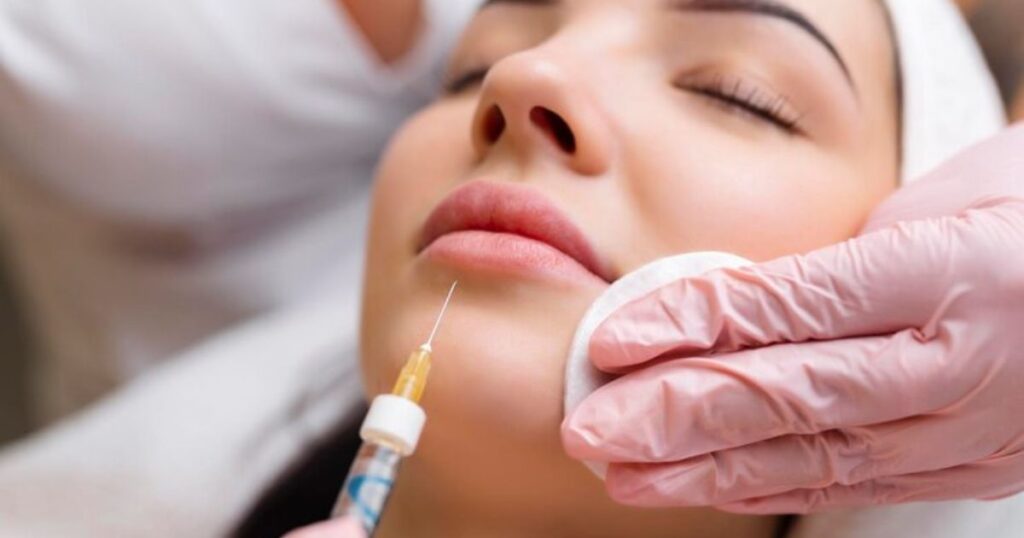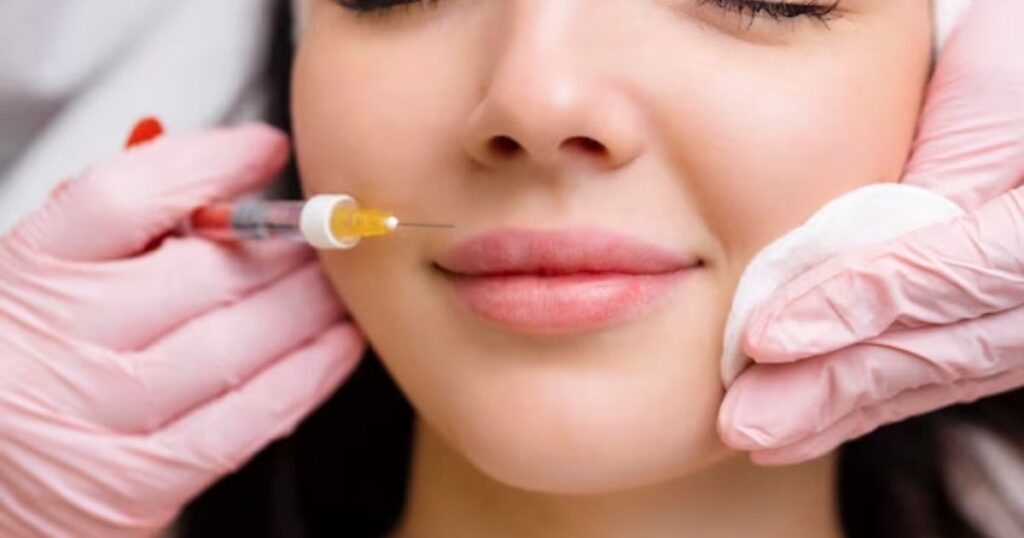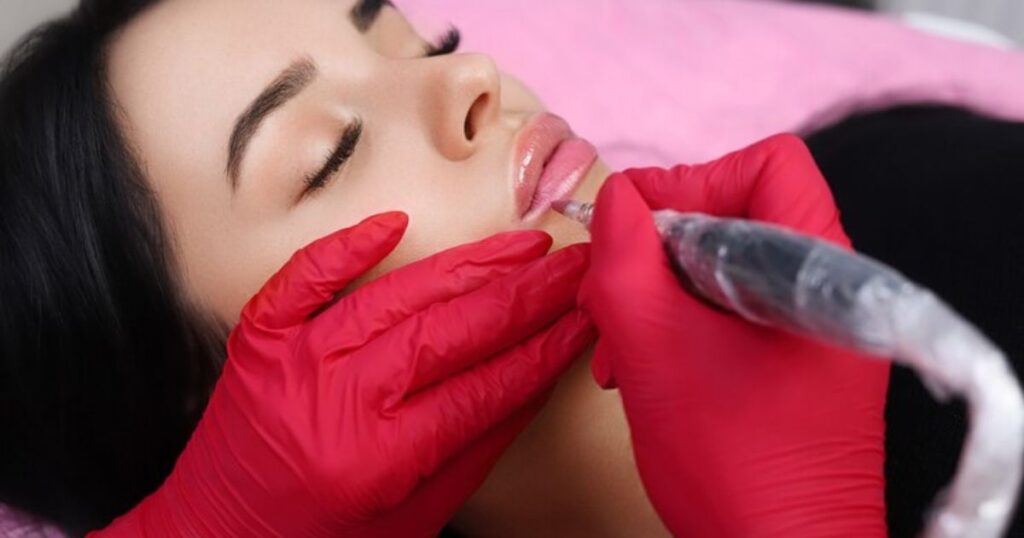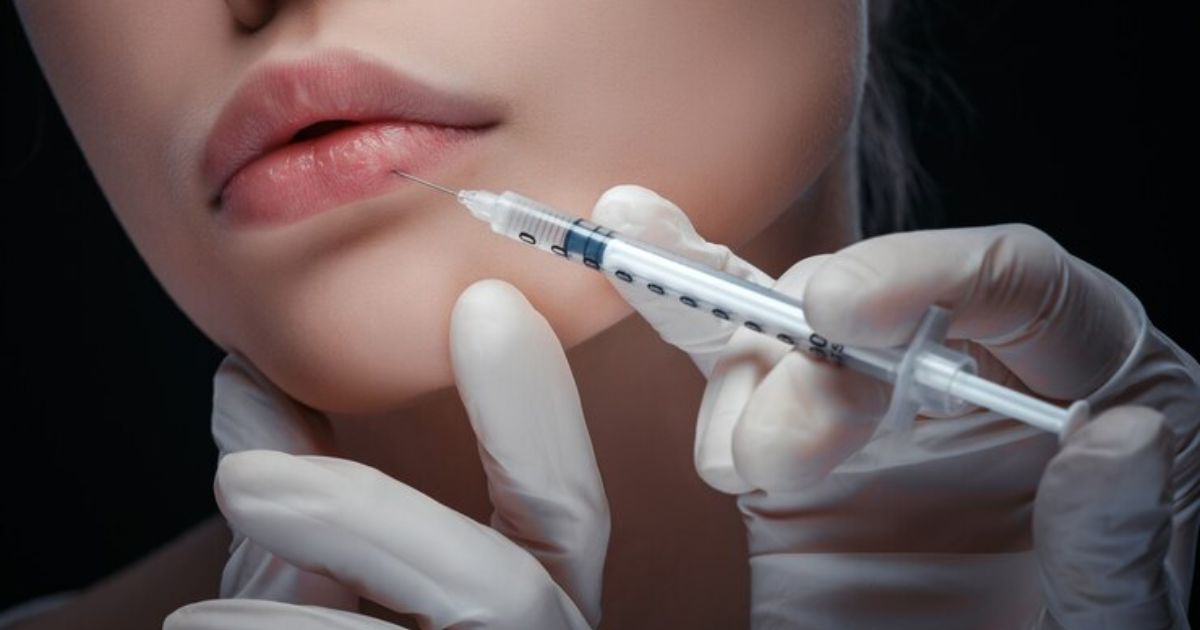The lip filler healing process is a crucial phase following a cosmetic procedure aimed at augmenting and enhancing the appearance of the lips. Whether seeking fuller lips, improved symmetry, or reshaping, individuals opt for lip fillers to achieve desired aesthetic results. Understanding the intricacies of the healing journey post-filler injection is fundamental in managing expectations and ensuring a smooth recovery.
In the initial days after the procedure, patients may experience temporary side effects such as swelling, bruising, and tenderness at the injection sites. These are common and typically subside within a few days to a week. However, the complete healing process might extend over several weeks as the filler settles and integrates with the tissues, showcasing the final outcome gradually.
Careful adherence to post-procedure instructions provided by the practitioner is essential for a successful recovery. Proper aftercare routines and avoiding certain activities during the healing period significantly contribute to optimal results. Understanding the timeline and potential side effects can prepare individuals for what to expect and enable them to navigate the healing process with confidence.
Understanding the Lip Filler Healing Journey

The healing journey after getting lip fillers can vary for each person, but understanding the general process can help manage expectations and ensure a smoother recovery. After the procedure, it’s normal to experience swelling, redness, and potential bruising around the treated area. These side effects usually diminish within a few days to a week.
During the initial stage, your lips might feel tender or sensitive. Applying ice packs or cold compresses can help reduce swelling and ease any discomfort. It’s essential to follow post-procedure care instructions provided by your practitioner, which often include avoiding strenuous activities, excessive sun exposure, or touching the treated area to prevent infection.
As the days progress, the swelling will gradually subside, revealing the final results of your lip augmentation. Keeping your lips hydrated with recommended moisturizers and staying hydrated internally by drinking plenty of water can contribute to a smoother healing process.
It’s important to note that individual healing times may vary, and full results might take a couple of weeks to settle completely. Patience is key during this period. If there are concerns about the healing process or any unexpected symptoms, consulting your practitioner is crucial for appropriate guidance and reassurance.
Managing Expectations: Lip Filler Recovery Stages

Managing expectations throughout the various stages of lip filler recovery is crucial for a positive experience. The recovery process typically follows several stages:
Immediate Post-Procedure
Immediately after receiving lip fillers, the body responds with typical post-procedure reactions. Swelling, redness, and possible bruising in the treated area are common occurrences. Initially, the lips may appear fuller due to swelling, which typically peaks within the first 24-48 hours.
Sensitivity or tenderness around the lips might also be experienced. Applying cold compresses or ice packs as advised can help alleviate swelling and discomfort during this initial phase, setting the stage for the subsequent healing process.
Initial Days
During the initial days following lip filler treatment, swelling and tenderness are prevalent. The lips might appear more pronounced due to swelling, which typically peaks within the first 24 to 48 hours. Sensitivity and discomfort can accompany this phase.
Applying cold compresses or ice packs as recommended helps alleviate swelling and soothe any discomfort. Patience during this period is vital as the true outcome of the lip augmentation becomes more discernible once the initial swelling starts to subside.
Subsiding Swelling
Subsiding swelling marks the transitional phase in lip filler recovery, typically occurring several days after the procedure. During this period, the pronounced swelling gradually diminishes, revealing a clearer depiction of the final results.
As the tissues settle and inflammation reduces, the lips begin to take on the intended shape and volume. While some residual tenderness may persist, adhering to post-procedure care guidelines aids in this stage, facilitating a smoother transition toward the ultimate, more natural appearance of the augmented lips.
Recovery Continues
During the ‘Recovery Continues’ phase post-lip filler treatment, gradual improvement persists over the following week. Lingering tenderness and minimal swelling may prevail, emphasizing the importance of adhering to post-care instructions. Patience remains pivotal as the filler settles, revealing the true augmentation results.
At this stage, avoiding strenuous activities and following recommended guidelines are crucial for optimal healing. Continuous monitoring and gentle care contribute significantly to a smoother and more satisfying transition towards the final, desired outcome.
Final Results
The culmination of the lip filler healing journey unveils the final results, typically emerging after a couple of weeks. At this stage, the filler settles completely, revealing the intended shape and volume. Any initial asymmetries often resolve, presenting a harmonious appearance. Lips appear naturally plump, defined, and aligned with the desired aesthetic. Patience during this period allows for the full manifestation of the treatment’s benefits, offering a confident and enhanced lip contour that aligns with individual expectations and desired outcomes.
It’s vital to understand that individual healing experiences can vary. Factors like metabolism, individual skin characteristics, and the amount and type of filler used can influence the recovery timeline and final results.
Consulting your practitioner and following their guidance, along with practicing patience during each stage of recovery, can help manage expectations and ensure a smoother transition to the desired outcome.
Post-Procedure Care: Lip Filler Healing Tips

Certainly! Here’s a simple chart outlining post-procedure care tips for lip filler healing:
| Lip Filler Healing Tips | Description |
| Keep the area clean | Use gentle cleansers to avoid infections. |
| Ice for swelling | Apply ice packs to reduce swelling and discomfort. |
| Avoid excessive movement | Minimize lip movements to aid in the healing process. |
| Use prescribed ointments | Apply recommended ointments for hydration and care. |
| Stay hydrated | Drink plenty of water to maintain lip hydration. |
| Avoid direct sunlight exposure | Protect lips from sun damage during the healing phase. |
| Follow post-procedure guidelines | Adhere to specific instructions from your provider. |
| Minimize strenuous activities | Avoid activities that could stress the lip area. |
| Watch for unusual symptoms | Monitor for signs of infection or allergic reactions. |
| Follow-up appointments | Attend scheduled follow-ups with your practitioner. |
Common Side Effects During Lip Filler Recovery

During the recovery from lip filler injections, individuals may experience several common side effects, which typically resolve within a few days to a couple of weeks. These may include:
Swelling: Immediate swelling is common and can last for a few days. It usually subsides gradually.
Bruising: Bruising at the injection sites is typical and can take several days to fade. Using arnica or topical treatments may help alleviate bruising.
Tenderness: The lips might feel tender or sore for a few days post-procedure.
Redness: Mild redness or irritation around the injection sites might occur, but it usually diminishes within a few days.
Lumpiness or Unevenness: Initially, the lips may feel slightly lumpy or uneven. This is normal and often resolves as the filler settles.
Dryness: Some people experience dry or chapped lips after the procedure. Regular moisturization can help alleviate this.
Itching or Tingling: Sensations of itching or tingling at the injection sites might occur temporarily.
Difficulty in Speaking or Smiling: Due to swelling or stiffness, some individuals might experience temporary difficulty in speaking or smiling normally.
It’s essential to note that severe or persistent side effects should be reported to the practitioner promptly. Following aftercare instructions and avoiding certain activities can help minimize these side effects and ensure a smoother recovery.
Timeline of Lip Filler Healing: What to Expect
The timeline of lip filler healing involves distinct stages that individuals typically experience post-procedure. Immediately after the injections, it’s common to encounter some swelling, redness, and potential bruising around the lips. Within the first 24 to 48 hours, these initial side effects tend to peak and gradually subside over the following week.
During this time, applying ice packs intermittently and adhering to the practitioner’s aftercare instructions can help alleviate discomfort and minimize swelling. By the end of the first week, most visible swelling typically resolves, revealing the initial results of the lip filler treatment.
Over the next few weeks, any residual swelling diminishes further, and the filler settles into its final position, achieving a more natural appearance. However, it’s important to note that individual healing timelines can vary, and final results may fully manifest within two to four weeks post-procedure. Regular follow-ups with the practitioner help monitor progress and ensure optimal healing.
Reducing Discomfort: Coping with Lip Filler Recovery
The process of recovering from lip filler injections can involve various levels of discomfort for individuals. It’s essential to recognize and manage these discomforts effectively to ensure a smoother healing journey.
Managing Swelling and Bruising: Swelling and bruising are common after lip filler procedures. Applying ice packs intermittently in the initial hours post-procedure can help reduce swelling. Additionally, arnica cream or supplements might assist in minimizing bruising.
Addressing Pain or Tenderness: Mild pain or tenderness around the treated area is typical. Over-the-counter pain relievers recommended by your practitioner can help manage discomfort. Avoiding strenuous activities that could strain the lips is also advisable during this phase.
Alleviating Dryness or Tightness: Lips might feel dry or tight as they heal. Regularly applying recommended moisturizers or lip balms, particularly those devoid of harsh chemicals, can keep the lips hydrated and ease any tightness.
Avoiding Aggravating Factors: Certain habits or activities can exacerbate discomfort during the healing phase. These include excessive sun exposure, smoking, or consuming alcohol. Avoiding these can contribute significantly to a smoother recovery.
Communicating with Your Practitioner: Maintaining open communication with the practitioner who performed the procedure is crucial. They can provide personalized advice and, if necessary, recommend additional measures to ease discomfort or address any concerns.
Patience in the Healing Process: Remember, discomfort during lip filler recovery is typically temporary. Most symptoms subside within a few days to a week. However, individual healing timelines vary, so patience and proper care are key to achieving the desired results while minimizing discomfort.
Long-Term Results: Navigating the Healing Process
The journey of healing after lip filler injections is a crucial phase that significantly impacts the long-term results. While immediate post-procedure effects like swelling, bruising, and minor discomfort are common, navigating the healing process is pivotal for achieving desired outcomes.
Patience becomes paramount as the initial swelling subsides within a few days, revealing the true augmentation achieved. However, the complete healing and integration of the filler with natural tissue might take a few weeks. It’s essential to follow post-procedure care instructions diligently, avoiding strenuous activities, excessive sun exposure, or pressure on the treated area.
As the weeks pass, the lips gradually settle into their final shape and size, showcasing the intended enhancement. Regular follow-ups with the provider aid in tracking progress and addressing any concerns that may arise during this healing journey, ensuring the best possible long-term results.
Dos and Don’ts for Optimal Lip Filler Healing
Certainly! Here’s a simple chart outlining the dos and don’ts for optimal lip filler healing:
| Dos | Don’ts |
| Do follow post-care instructions provided by your practitioner | Don’t touch or press on the treated area excessively |
| Do keep the treated area clean with gentle cleansing | Don’t consume alcohol excessively as it may prolong healing |
| Do apply ice packs as recommended to reduce swelling | Don’t engage in strenuous physical activities immediately after the procedure |
| Do stay hydrated to aid in the healing process | Don’t expose the treated area to direct sunlight or tanning beds |
| Do eat soft, cool foods to minimize discomfort | Don’t use hot compresses or saunas on the treated area |
| Do contact your practitioner if you notice any concerning symptoms | Don’t apply makeup or skincare products to the treated area without approval |
This chart can serve as a helpful reference during the lip filler healing process to ensure the best possible outcome.
Pros and Cons
Absolutely, here’s a chart outlining the pros and cons of the lip filler healing process:
| Pros | Cons |
| Enhanced lip volume and shape | Potential swelling and bruising |
| Immediate results | Temporary discomfort or tenderness |
| Minimal downtime | Possibility of allergic reactions |
| Customizable results | Risk of asymmetry or overfilling |
| Boosted confidence | Temporary redness or sensitivity |
| Non-surgical procedure | Rare instances of lumps or nodules forming |
Remember, these pros and cons can vary from person to person and depend on individual healing processes and reactions.
FAQ’s
How long does it take for lip fillers to heal?
Swelling due to lip dermal filler injections starts off strong and then slowly diminishes over several days to weeks. The initial swelling patients see within the first 24 hours is not a reflection of the final results. All swelling subsides completely after about 5 days, but can take up to 2 weeks.
How long do lips stay swollen after filler?
Patients tend to report that lip swelling is the worst the first day after their injection, particularly in the morning. Swelling should go down within 2–3 days after your lip filler treatment, and should subside completely within 2 weeks post-treatment.
Should I touch my lips after filler?
Avoid kissing/massaging/touching your lips
Avoid applying pressure to your lips. Kissing, massaging, or touching your lips can increase the risk of infection and interfere with how the fillers settle into your lips. You need time to allow the puncture holes to heal, so bacteria can’t travel through them.
How long does 0.5 ml lip filler last?
0.5ml lip filler provides clients with a subtle lip augmentation that lasts approximately 6 to 12 months. This amount of filler is perfect for those beginning their dermal filler journey and will allow you to achieve noticeable natural-looking results.
Can I use Vaseline after lip filler?
Protection and Comfort. Lips can be particularly painful during the initial healing phase after lip filler injections. Vaseline can provide a protective and soothing layer, minimizing friction that might happen when the lips move and easing discomfort.
Conclusion
The lip filler healing process is a journey that demands patience and careful attention. Understanding the stages and managing expectations play vital roles in achieving desired results. Post-procedure care is fundamental; adhering to guidelines minimizes discomfort and reduces potential side effects. Initially, swelling, bruising, or tenderness might arise, but these typically subside within a few days to a week.
As the weeks progress, the filler settles, revealing the final outcome. Adhering to the prescribed aftercare, such as avoiding strenuous activities and applying recommended ointments, greatly influences the healing trajectory. Regularly monitoring progress and consulting professionals if concerns arise ensures a smooth recovery.
Each individual’s healing timeline can vary, but most experience the full effects of lip fillers within a couple of weeks. Ultimately, patience, diligent care, and following post-procedure instructions contribute significantly to successful lip filler healing, leading to enhanced lip volume and contour with natural-looking results. A common query during this process is, “Does lip filler hurt?” It’s normal to experience some discomfort during and after the procedure, but proper techniques and numbing agents used by professionals can minimize this sensation.











